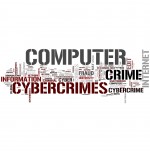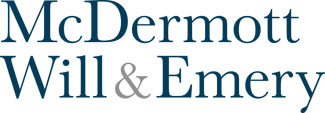Under the Uniform Trade Secrets Act (UTSA), “trade secrets” are generally defined as confidential proprietary information that provides a competitive advantage or economic benefit. Trade secrets are protected under the Economic Espionage Act of 1994 (EEA) at the federal level, and the vast majority of states have enacted statutes modeled after the UTSA (note that some jurisdictions, such as California, Texas and Illinois, have adopted trade secret laws that differ substantially from the UTSA; thus, businesses should research laws in the relevant jurisdiction(s).). Under the UTSA, to be protectable as a trade secret, information must meet three requirements:
i. the information must fall within the statutory definition of “information” eligible for protection;
ii. the information must derive independent economic value from not being generally known or readily ascertainable by others using appropriate means; and
iii. the information must be the subject of reasonable efforts to maintain its secrecy.
Trade secret theft continues to accelerate among U.S. companies, and can have drastic consequences. To combat this threat, Congress and certain state legislatures have recently enacted legislation to broaden trade secret protection. As a result, it is paramount that companies safeguard all proprietary information that may qualify as protectable trade secrets. This blog post explains some key trade secrets concepts, and offers pointers on how to identify and protect trade secrets.
(1) Determine Which Data Constitutes “Information”
The UTSA-type statutes generally define “information” to include:
Financial, business, scientific, technical, economic, and engineering information;
Computer code, plans, compilations, formulas, designs, prototypes, techniques, processes, or procedures; and
Information that has commercial value, such as customer lists or the results of expensive research.
Courts have similarly interpreted “information” to cover virtually any commercially valuable information. Examples of information that has been found to constitute trade secrets includes pricing and marketing techniques, customer and financial information, sources of supplies, manufacturing processes, and product designs.
(2) “Valuable” and “Not Readily Ascertainable” Information
To be protectable, information must also have “economic value” and not be “readily ascertainable” by others. Courts generally determine whether information satisfies this standard by considering the following factors:
Reasonable measures have been put in place to protect the information from disclosure;
The information has actual or potential commercial value to a company;
The information is known by a limited number of people on a need-to-know basis;
The information would be useful to competitors and would require a significant investment to duplicate or acquire the information; and
The information is not generally known to the public.
(3) Take Reasonable Measures to Maintain Secrecy
Businesses should implement technical, administrative, contractual and physical safeguards to keep secret the information sought to be protected. Companies should identify foreseeable threats to the security of confidential information; assess the likelihood of potential harm flowing from such threats; and implement security protocols to address potential threats. Examples of security measures might include restricting access to confidential information on a need-to-know basis, employing computer access restrictions, circulating an employee handbook that outlines company policies governing confidential information, conducting entrance interviews for new hires to determine whether they are subject to restrictive covenants with former employers, conducting exit interviews with departing personnel to ensure that the employee has returned all company materials and agrees to abide by post-employment obligations, encrypting confidential information, limiting access to confidential information through passwords and network firewalls, track all access to network resources and confidential information, restrict the ability to email, print or otherwise transfer confidential information, employ security personnel, limit visitor access, establish surveillance procedures, and limit physical access to areas that may have confidential information.
Conclusion
This blog post is intended to provide some broad guidelines to identifying and protecting company trade secrets. Most if not all companies have confidential information that may be protectable as a trade secret. But certain precautions need to be in place to ensure that the information is protectable. Because each company and situation is different, you should seek advice about your specific circumstances.










